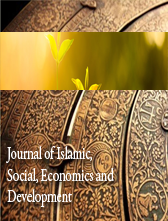THE HISTORY, MODUS OPERANDI AND CHALLENGES OF COMBATING DRUG SMUGGLING AT LANGKAWI ISLAND WITH ITS LINKS TO THE GOLDEN TRIANGLE
Abstract
Langkawi Island, a tourist destination, is also a hotspot for drug trafficking, which involves transnational organised crime together with other Southeast Asian countries. This study aims to elaborate on the history, modus operandi, and challenges in combating drug smuggling at Langkawi Island. This is a qualitative study reliant on primary data of interviews through purposive sampling from chosen parties comprising policy makers and enforcement personnel who have tried to curb these drug trafficking and smuggling activities. Secondary data on the background of drug trafficking in Southeast Asia and Malaysia consists of books, book chapters, journals, conference papers, newspapers, and other online materials obtained from the internet. Both primary and secondary resources were subjected to a content analysis based on certain themes that had emerged. The result of this study shows that even during British colonisation, Langkawi Island was a transit point for opium being channelled to Penang. During the Vietnam War in the 1960s-1970s, American troops made it fashionable to consume drugs during their vacation on Langkawi Island. The Malay Muslims of Kedah who came back from Myanmar to reside at Bukit Malut, Langkawi Island, were also involved in drug trafficking in the 1980s to earn an income to relieve their poverty. Various jetties built throughout the 1990s on Langkawi Island have been abused by foreign drug syndicates from neighbouring countries to smuggle drugs because of the high demand from the locals and foreign tourists. The proximity between Satun, Thailand located near the Andaman Sea, has been advantageous for international drug syndicates to transport drugs to this island through secluded jetties and to Indonesia. Fishermen have been largely involved with drug smuggling, while teenagers distribute drugs on Langkawi Island.













